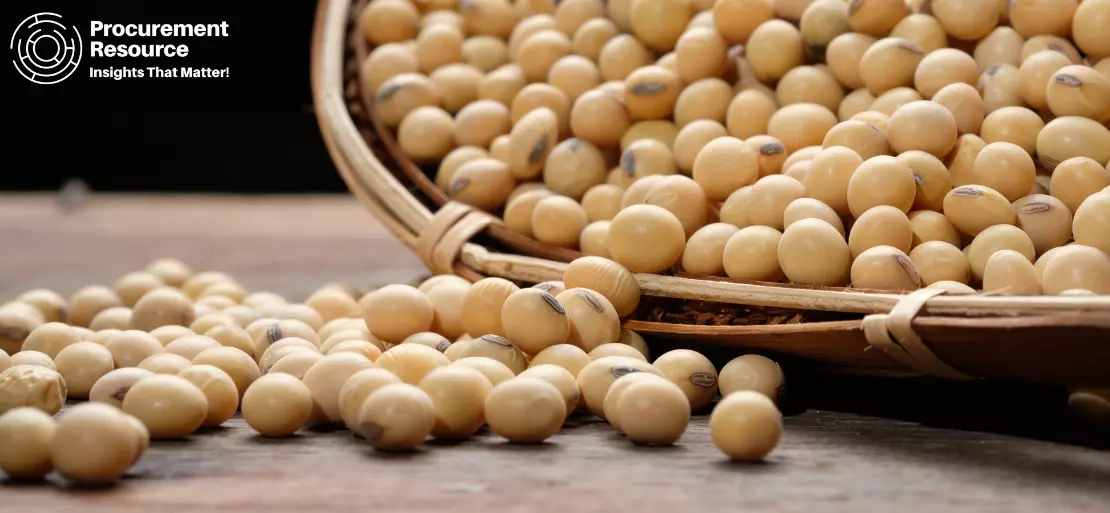Latin American Soybean Meal Premiums Reached an All-Time High

According to sources, South American FOB soybean meal basis levels have risen to record highs due to strong Indian demand and the effects of Hurricane Ida on the Gulf Coast's export facilities in the United States.
Argentina's FOB Up River basis was assessed at plus USD 35/st to Chicago Board of Trade futures on September 14-15 and 17-20, the highest level for a front-month loading S&P Global Platts soybean meal assessment. To CBOT on September 15, the FOB Paranagua base was plus USD 49/st. It was also the highest rating for a front-month soybean meal cargo from S&P Global Platts.
Participants noted a mix of supportive factors contributed to the firmness in South American FOB soybean meal basis prices in September. India, a major buyer of Argentinian soybean oil, reduced its import duty on crude soybean and sunflower oil on August 20, hoping to slash domestic prices. India is the world's largest importer of edible oils.
In late August, India said that it was seeking 1.2 million metric tons of genetically modified soybean meal from outside the country for use in animal feed due to escalating feedstock costs. Argentina and the United States were thought to be the primary sources for such demand.
In August, there were also Argentinian biodiesel cargoes traded, though the exact volume is unknown. According to S&P Global Platts Analytics, Argentina's biodiesel exports will reach 900,000 metric tons in 2021, up from 2020, with production increasing by more than 12% year on year.
Since soybean oil is the main feedstock for biodiesel production in both Argentina and Brazil, such Argentine transactions boosted local premiums. Firmer demand for biodiesel may eventually redirect some of the FOB soybean oil supplies to local biodiesel producers, reducing the availability for exports and, as a result, supporting basis levels.
Since then, India has announced some flexibility for external purchases, which has helped to keep FOB rates in originating countries stable. First, it permitted imports through three additional ports- Mumbai, Thoothukudi, and Visakhapatnam, a move that is likely to favour the movement of logistics toward Indian ports. India also has extended the shipment window for such products till January 31, up from October 31.
Because of Hurricane Ida's effects on the United States Gulf Coast, demand for South American soybean meal, particularly from Argentina, increased in early September, with numerous export terminals damaged and some still not fully functioning.
International customers were compelled to divert their purchasing away from the United States and toward other countries, with Argentina, the world's leading exporter of soybean meal, emerging as a natural source. There were exchanges in the FOB Up River cargo market relating to Indian demand, according to participants, although details could not be confirmed.
Meanwhile, farmers in Argentina and Brazil are selling soybeans at a slower rate this marketing year than last, potentially affecting crush operations and soybean meal manufacturing, according to sources.
Improving export demand has occurred amid tight spot supplies of soybean oil for export in Argentina. Tight supply is caused by a slow pace of soybean sales by farmers, which has an impact on crusher operations that are already dealing with low margins, according to the participants.
Argentinian farmers had sold 30.05 million metric tons of soybeans for the 2020-2021 marketing year (April-March) as of September 15, in comparison to the previous year.
According to data from specialised consultant Safras & Mercado, farmers had traded around 86% of this year's record harvest by the beginning of September. By this time last season, it was nearly 98%, and the five-year average was 88.5%.
FOB premiums have weakened recently in Argentina and Brazil as the United States soybean harvest proceeds, pressuring the whole soybean complex, according to analysts. On September 22, the Argentinian FOB Up River basis for November loading was assessed at plus USD 31/st to the CBOT December (Z) contract, still well above by this time last year.
S&P Global Platts on September 22 assessed the Brazilian FOB Paranagua basis for the same month at plus USD 41/st to CBOT, from the prior year. According to S&P Global Platts Analytics, Brazil is predicted to produce 6 million metric tons of biodiesel in 2021, up from the last year. Almost all of Brazil's biodiesel is consumed domestically.
According to S&P Global Platts Analytics, Brazil is predicted to produce 9.2 million metric tons of soybean oil in the 2021-2022 season, with 1.3 million metric tons exported, while Argentina is expected to produce 8.6 million metric tons, with some of it being exported.

.webp)